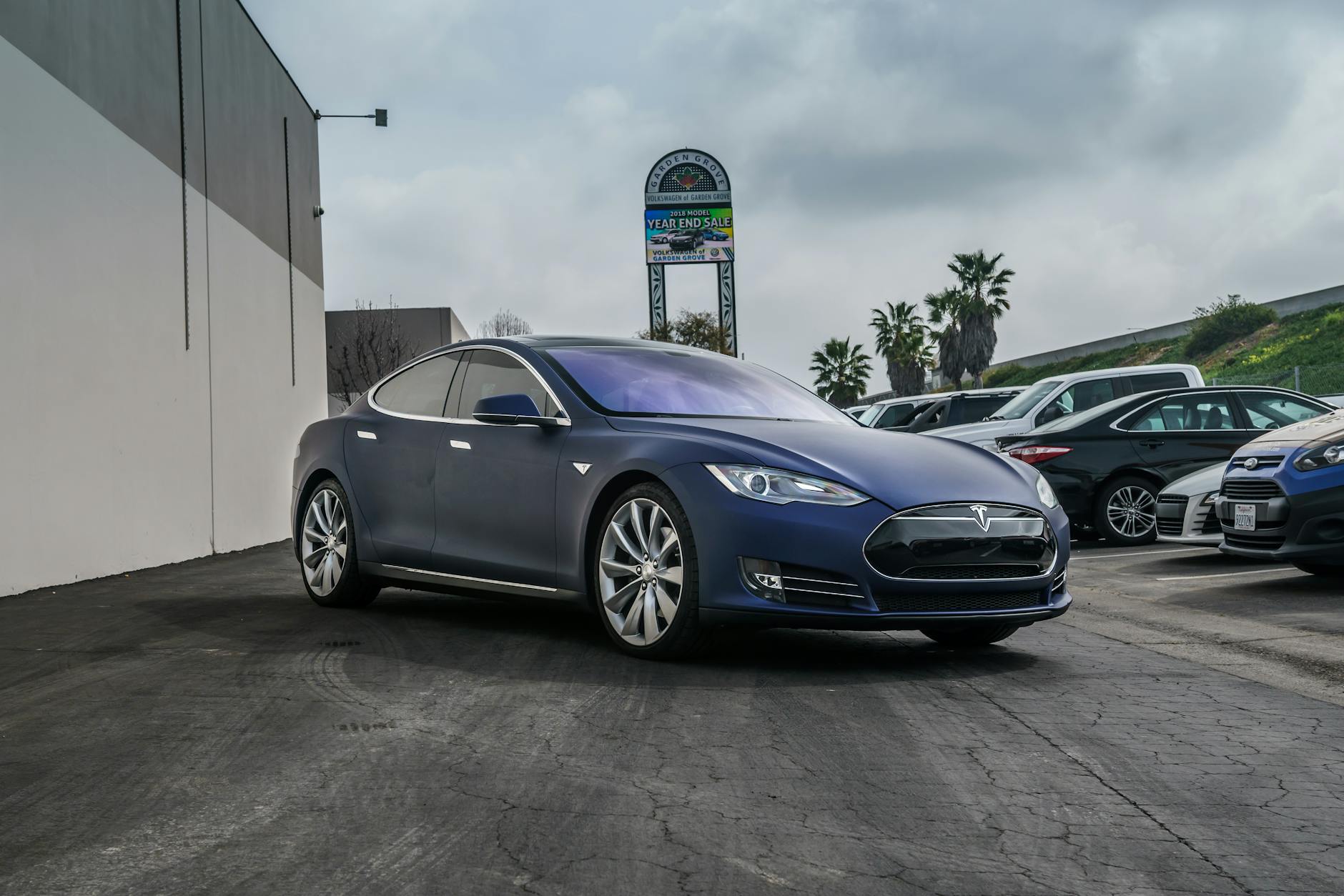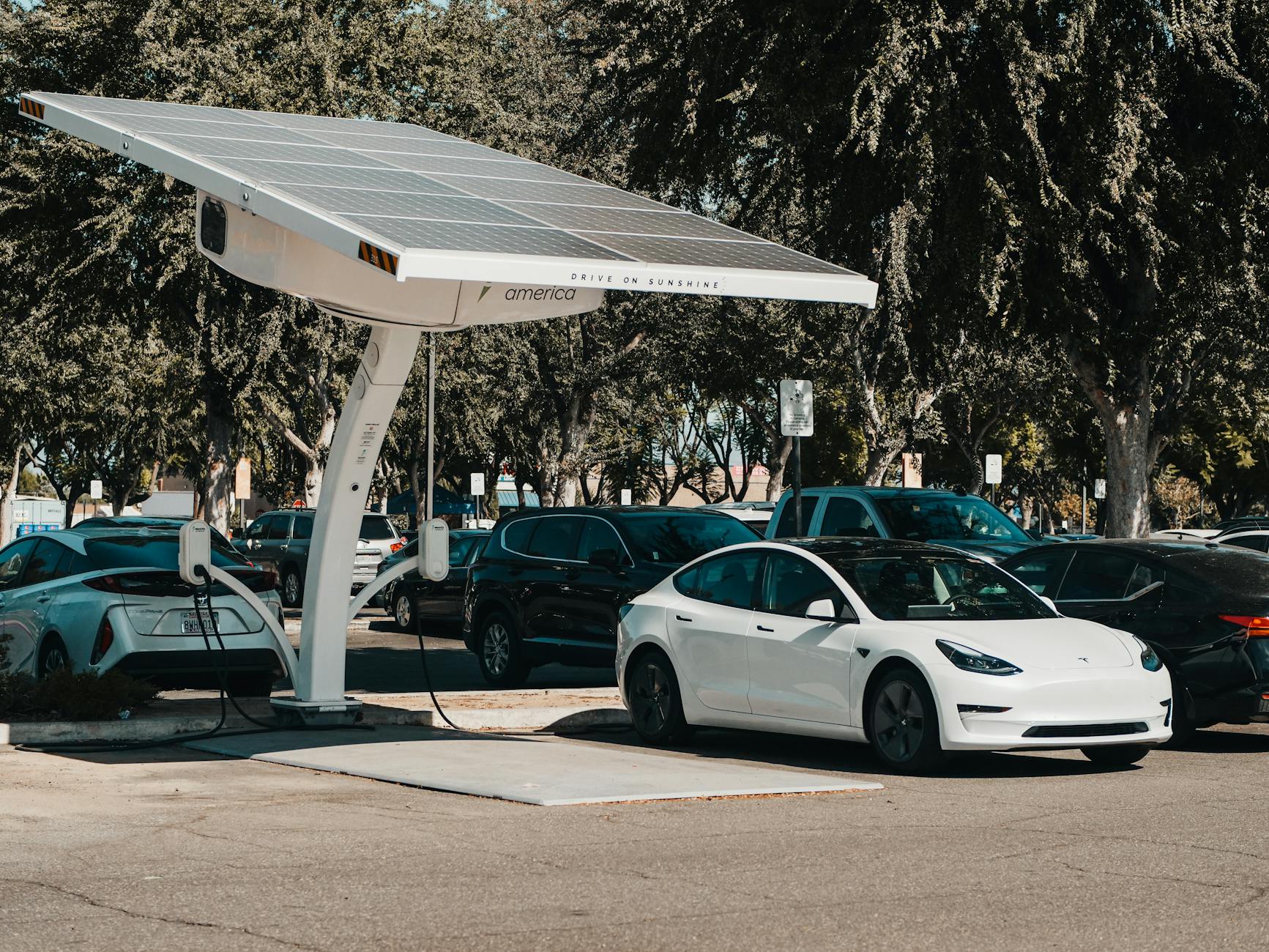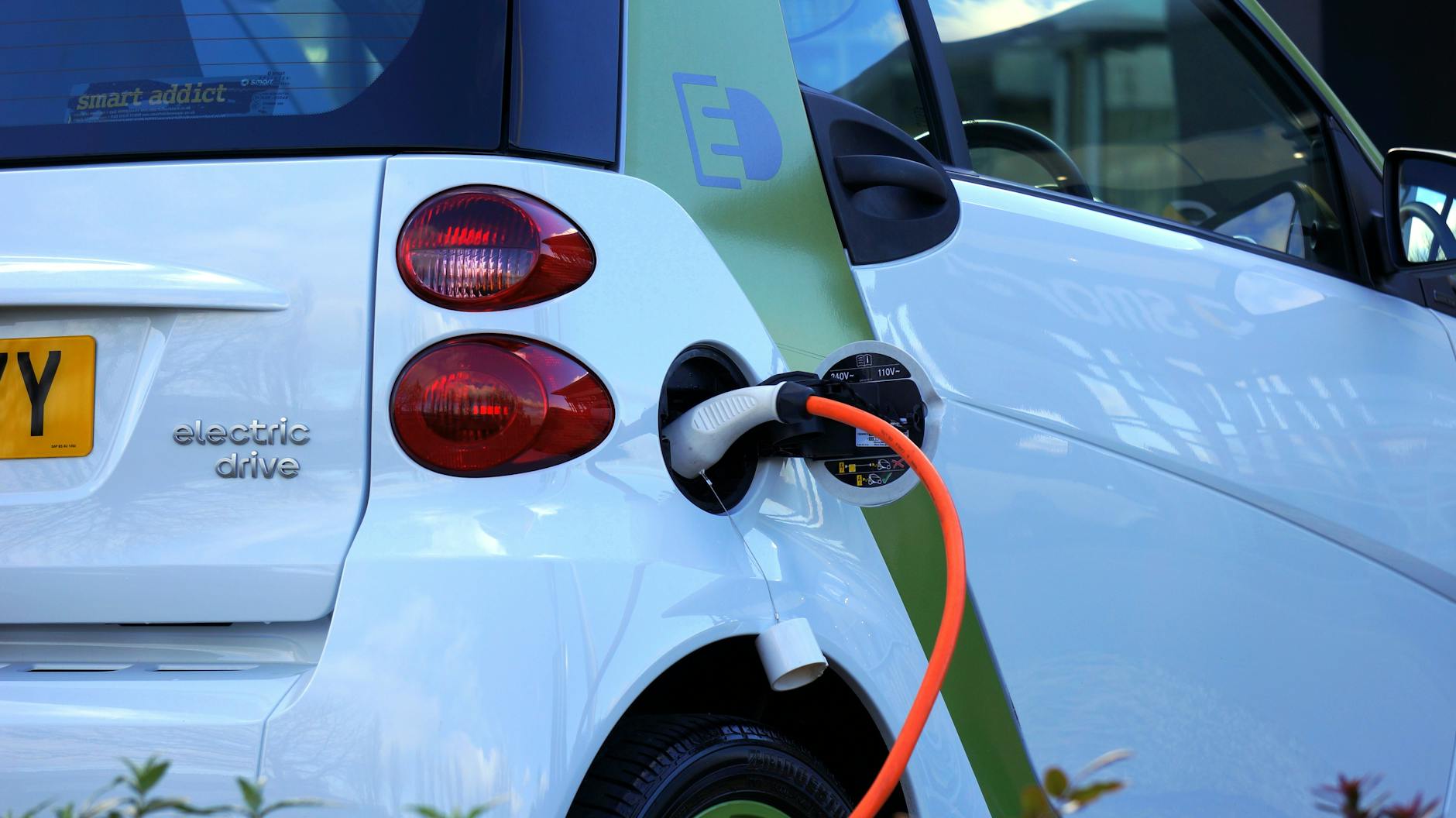Have you noticed the price tags on electric vehicles becoming more wallet-friendly lately? 🚗💨 The USA is experiencing a significant shift in the EV market, with prices dropping faster than a hot potato. This trend is not just a fleeting moment; it’s reshaping the entire automotive landscape.
Imagine cruising down the highway in a sleek, eco-friendly vehicle without breaking the bank. 🌿💰 The dream of owning an electric car is now within reach for more Americans than ever before. But what’s driving this sudden affordability, and what does it mean for you, the environment, and the future of transportation?
In this post, we’ll dive into the fascinating world of EV price reduction, exploring the factors behind this trend and its far-reaching implications. From market impacts to environmental benefits, we’ll uncover how this price drop is electrifying the nation’s roads and potentially your garage. Buckle up as we explore the five key aspects of this EV revolution that’s charging up the USA! ⚡🇺🇸
Factors driving EV price reduction

A. Increased competition among manufacturers
The electric vehicle (EV) market has become increasingly competitive in recent years, with more manufacturers entering the arena. This heightened competition has led to a significant drop in EV prices across the USA. As established automakers and new entrants vie for market share, they are forced to innovate and reduce costs to attract consumers.
Several factors contribute to this competitive landscape:
- New market entrants
- Established automakers shifting focus
- Diverse product offerings
- Price wars
Let’s explore these factors in more detail:
| Factor | Impact on EV Prices |
|---|---|
| New market entrants | Forces established players to lower prices |
| Established automakers shifting focus | Increases production volume, leading to cost reductions |
| Diverse product offerings | Caters to various consumer segments, driving down prices across the board |
| Price wars | Directly impacts consumer prices as manufacturers compete for market share |
B. Technological advancements in battery production
Battery technology has been a crucial factor in the reduction of EV prices. Recent advancements have led to more efficient and cost-effective battery production methods, significantly impacting the overall cost of electric vehicles.
Key developments in battery technology include:
- Improved energy density
- Longer battery life
- Faster charging capabilities
- Reduced production costs
These advancements have not only made EVs more affordable but also more practical for everyday use. As battery technology continues to evolve, we can expect further price reductions in the EV market.
C. Government incentives and subsidies
Government support has played a vital role in driving down EV prices in the USA. Various incentives and subsidies at both federal and state levels have made electric vehicles more accessible to consumers.
Some common government incentives include:
- Tax credits for EV purchases
- Rebates on charging equipment installation
- HOV lane access for EV drivers
- Reduced registration fees
These incentives effectively lower the overall cost of owning an electric vehicle, making them more competitive with traditional gasoline-powered cars.
D. Economies of scale in production
As EV production volumes increase, manufacturers benefit from economies of scale. This means that the cost per unit decreases as production quantities rise, allowing companies to offer more competitive pricing.
Factors contributing to economies of scale in EV production:
- Streamlined manufacturing processes
- Bulk purchasing of components
- Optimized supply chain management
- Increased automation in production
As production volumes continue to grow, we can expect further price reductions in the EV market. This trend will likely accelerate as more consumers adopt electric vehicles, creating a positive feedback loop of increased demand and lower prices.
Now that we’ve explored the factors driving EV price reduction, let’s examine how these changes are impacting the broader automotive market.
Impact on the automotive market

Shift in consumer preferences
The recent drop in electric vehicle (EV) prices in the USA has sparked a significant shift in consumer preferences. As EVs become more affordable, an increasing number of buyers are considering them as viable alternatives to traditional gas-powered vehicles. This shift is driven by several factors:
- Cost savings
- Environmental consciousness
- Technological advancements
- Government incentives
| Factor | Impact on Consumer Preferences |
|---|---|
| Cost savings | Lower upfront costs and reduced long-term expenses |
| Environmental consciousness | Reduced carbon footprint and eco-friendly transportation |
| Technological advancements | Improved range, performance, and features |
| Government incentives | Tax credits and rebates make EVs more attractive |
Traditional automakers’ response
As consumer interest in EVs grows, traditional automakers are responding to the changing market dynamics:
- Expanding EV lineups: Many established brands are introducing new electric models across various vehicle segments.
- Retooling manufacturing facilities: Companies are investing in EV production capabilities to meet growing demand.
- Partnerships and collaborations: Automakers are forming alliances to share EV technology and reduce development costs.
- Marketing initiatives: Traditional brands are emphasizing their commitment to electrification in advertising campaigns.
Market share projections for EVs
With the price drop and increasing consumer interest, market share projections for EVs are becoming increasingly optimistic:
- Short-term growth: Analysts predict EVs will capture 10-15% of new vehicle sales in the USA by 2025.
- Mid-term expansion: By 2030, EVs are expected to account for 30-40% of new car sales.
- Long-term dominance: Some projections suggest EVs could represent over 50% of new vehicle sales by 2035.
These projections are based on several factors:
- Continued price reductions
- Improvements in charging infrastructure
- Advancements in battery technology
- Stricter emissions regulations
As the automotive market undergoes this transformation, we can expect to see a ripple effect throughout the industry. From supply chains to dealerships, the shift towards EVs will require significant adaptations. This change also presents new opportunities for innovation and competition, potentially reshaping the landscape of the automotive industry in the coming years.
Now that we’ve explored the impact on the automotive market, let’s examine how the price drop in EVs affects affordability and accessibility for consumers.
Affordability and accessibility for consumers
A. Comparison with gas-powered vehicles
When comparing electric vehicles (EVs) to their gas-powered counterparts, it’s essential to consider both upfront costs and long-term expenses. While EVs have traditionally been more expensive initially, recent price drops have narrowed this gap significantly. Let’s examine the key differences:
| Aspect | Electric Vehicles | Gas-Powered Vehicles |
|---|---|---|
| Initial Cost | Higher, but decreasing | Lower, but stable |
| Fuel Costs | Lower (electricity) | Higher (gasoline) |
| Maintenance | Less frequent, simpler | More frequent, complex |
| Resale Value | Generally higher | Generally lower |
| Range | Improving, but limited | Typically longer |
As EV prices continue to drop, the total cost of ownership over the vehicle’s lifetime often favors electric models, especially in areas with lower electricity rates.
B. Lower maintenance costs
One of the most significant advantages of EVs is their lower maintenance costs. This is due to several factors:
- Fewer moving parts: EVs have significantly fewer components than internal combustion engines, reducing the likelihood of mechanical failures.
- Regenerative braking: This system reduces wear on brake pads, extending their lifespan.
- No oil changes: EVs don’t require regular oil changes, saving both time and money.
- Simplified cooling systems: Electric motors generate less heat, requiring simpler cooling systems.
These factors contribute to reduced maintenance frequency and lower overall costs for EV owners. On average, EV owners can expect to save 30-50% on maintenance costs compared to gas-powered vehicle owners over the life of the vehicle.
C. Potential savings on fuel expenses
The shift to electric power can lead to substantial savings on fuel expenses. Consider the following points:
- Lower cost per mile: Electricity is generally cheaper than gasoline, resulting in lower per-mile costs.
- Stability of electricity prices: Unlike volatile gas prices, electricity rates tend to be more stable.
- Home charging convenience: Many EV owners can charge at home, eliminating trips to gas stations.
- Off-peak charging rates: Some utility companies offer lower rates for charging during off-peak hours.
To illustrate the potential savings, let’s compare the annual fuel costs for an EV versus a gas-powered vehicle:
| Vehicle Type | Annual Mileage | Fuel Efficiency | Fuel Cost | Annual Fuel Expense |
|---|---|---|---|---|
| Electric | 12,000 miles | 3.5 miles/kWh | $0.13/kWh | $446 |
| Gas-Powered | 12,000 miles | 25 mpg | $3.50/gallon | $1,680 |
In this example, the EV owner would save over $1,200 annually on fuel costs alone. Over the lifetime of the vehicle, these savings can add up to a significant amount, further offsetting the initial higher purchase price of an EV.
As EV prices continue to drop and charging infrastructure expands, the affordability and accessibility of electric vehicles are improving rapidly. This trend is making EVs an increasingly attractive option for a broader range of consumers, potentially accelerating the transition to more sustainable transportation.
Environmental benefits of increased EV adoption

Reduction in carbon emissions
As more consumers embrace electric vehicles (EVs), we’re witnessing a significant reduction in carbon emissions. EVs produce zero tailpipe emissions, which means they don’t release harmful greenhouse gases directly into the atmosphere during operation. This stark contrast to traditional internal combustion engine vehicles is a game-changer for our environment.
To put this into perspective, let’s compare the carbon footprint of EVs to conventional vehicles:
| Vehicle Type | Average CO2 Emissions per Mile |
|---|---|
| Electric | 100-200 grams |
| Gasoline | 400-500 grams |
| Diesel | 450-550 grams |
As we can see, EVs produce less than half the emissions of their fossil fuel counterparts, even when accounting for electricity generation. This difference becomes even more pronounced as our power grids transition to renewable energy sources.
Improved air quality in urban areas
The shift towards EVs is having a profound impact on air quality, particularly in densely populated urban areas. Here are some key benefits:
- Reduced particulate matter: EVs don’t emit fine particles that can cause respiratory issues.
- Lower nitrogen oxide levels: These harmful gases, common in diesel emissions, are virtually eliminated with EVs.
- Decreased smog formation: With fewer pollutants in the air, cities experience less smog and better visibility.
- Quieter streets: The reduction in noise pollution from EVs contributes to a more pleasant urban environment.
These improvements in air quality have far-reaching effects on public health, potentially reducing instances of asthma, cardiovascular disease, and other pollution-related illnesses.
Progress towards climate goals
The increased adoption of EVs is playing a crucial role in helping nations meet their climate targets. Many countries have set ambitious goals to reduce greenhouse gas emissions, and the transportation sector is a key focus area. Here’s how EVs are contributing:
- Meeting Paris Agreement targets: EVs are essential for countries to achieve their Nationally Determined Contributions (NDCs) under the Paris Agreement.
- Supporting renewable energy integration: As more EVs hit the roads, there’s a growing incentive to expand renewable energy infrastructure.
- Accelerating the transition to a low-carbon economy: The EV industry is driving innovation in battery technology and sustainable manufacturing practices.
As we look towards a future with cleaner air and reduced carbon emissions, it’s clear that the widespread adoption of electric vehicles is a crucial step in the right direction. The environmental benefits of this transition extend far beyond just reducing our carbon footprint – they’re reshaping our cities, improving our health, and paving the way for a more sustainable future.
Challenges and considerations

Charging infrastructure development
As electric vehicles become more affordable, the need for a robust charging infrastructure becomes increasingly critical. Currently, the U.S. faces significant challenges in developing a comprehensive network of charging stations to support the growing EV fleet.
- Key challenges in charging infrastructure development:
- Uneven distribution of charging stations
- Limited availability in rural areas
- Slow charging speeds in many public locations
- High costs of installation and maintenance
To address these issues, both public and private sectors must collaborate to expand and improve the charging network. This includes investing in fast-charging technologies and strategically placing charging stations in high-traffic areas and along major highways.
Grid capacity and energy demand
The increasing adoption of EVs puts additional strain on the existing power grid. As more people charge their vehicles, especially during peak hours, utilities face the challenge of meeting this growing demand while maintaining grid stability.
| Challenge | Potential Solution |
|---|---|
| Increased peak demand | Implement smart charging systems |
| Grid congestion | Upgrade transmission and distribution infrastructure |
| Power quality issues | Install grid-scale energy storage systems |
| Renewable energy integration | Develop vehicle-to-grid (V2G) technologies |
Utilities and policymakers must work together to modernize the grid, implement smart charging solutions, and integrate renewable energy sources to ensure a sustainable and reliable power supply for the growing EV fleet.
Battery recycling and disposal
As the number of EVs on the road increases, so does the need for proper battery recycling and disposal methods. Lithium-ion batteries, the most common type used in EVs, pose environmental and safety risks if not handled correctly at the end of their life cycle.
Key considerations for battery recycling and disposal:
- Developing efficient recycling technologies
- Establishing a robust recycling infrastructure
- Implementing regulations for safe handling and disposal
- Exploring second-life applications for used EV batteries
The industry must invest in research and development to improve recycling processes and create a circular economy for EV batteries, minimizing waste and reducing the environmental impact of electric vehicles.
Impact on oil industry and related jobs
The shift towards electric vehicles inevitably affects the oil industry and related sectors, potentially leading to job losses and economic disruption in some regions.
- Potential impacts on the oil industry:
- Reduced demand for gasoline and diesel fuel
- Closure of refineries and gas stations
- Shift in automotive maintenance and repair skills
To mitigate these effects, governments and industries must focus on:
- Retraining programs for workers in affected industries
- Investing in clean energy technologies and infrastructure
- Supporting the transition of oil companies towards renewable energy
While the transition to EVs presents challenges for the oil industry, it also creates new opportunities in the clean energy sector, potentially offsetting job losses with new roles in EV manufacturing, battery production, and charging infrastructure development.

The landscape of electric vehicles in the USA is undergoing a dramatic transformation, with prices dropping significantly due to various factors. This shift is reshaping the automotive market, making EVs more accessible to a broader range of consumers. As affordability increases, so does the potential for widespread adoption, leading to substantial environmental benefits through reduced emissions.
While the future of electric vehicles looks promising, challenges remain. Infrastructure development, battery technology improvements, and consumer education are crucial areas that need attention. As we move forward, it’s essential for consumers, manufacturers, and policymakers to work together to address these challenges and fully realize the potential of electric vehicles in creating a more sustainable transportation future.
